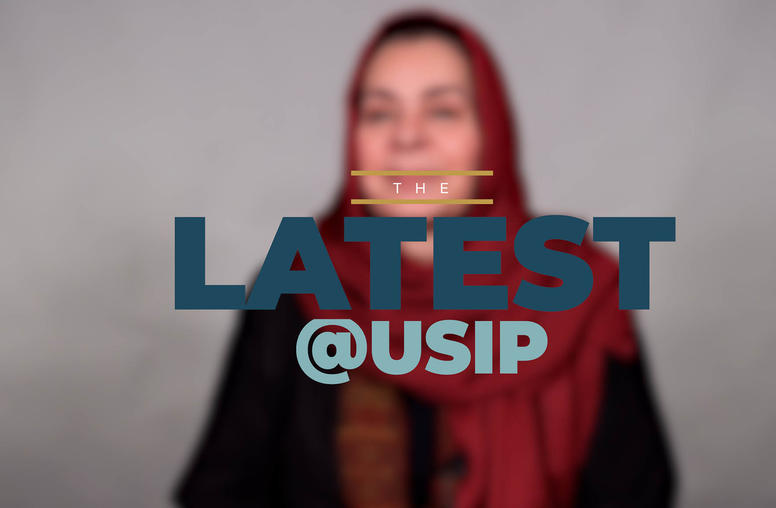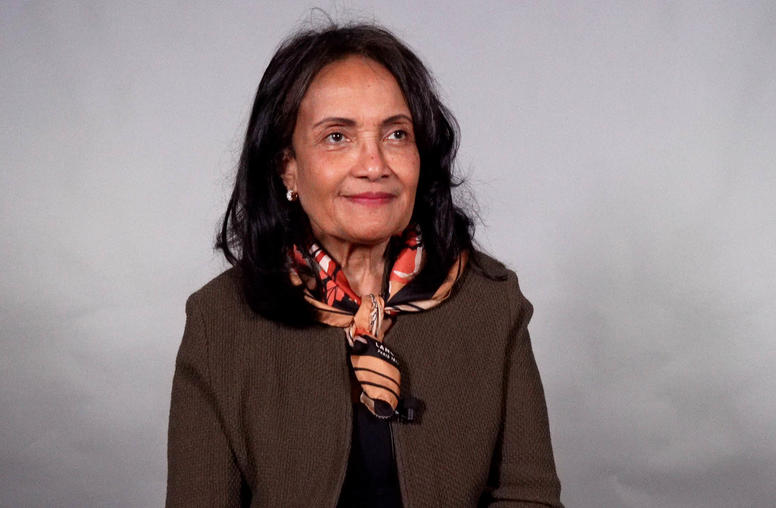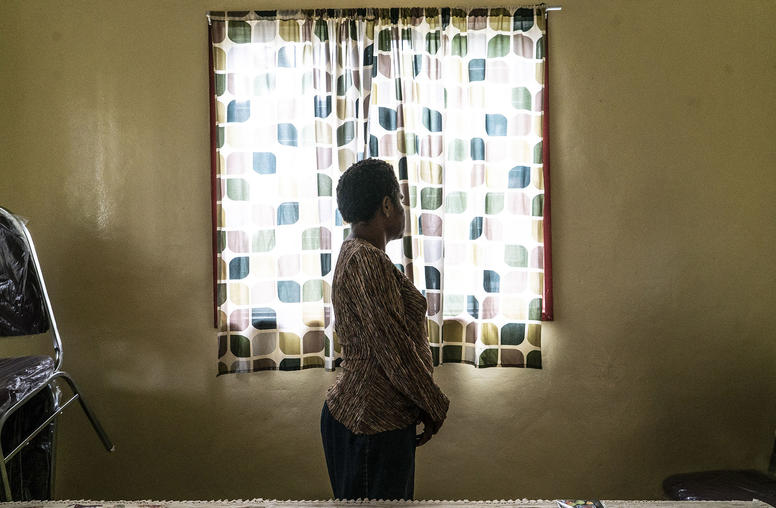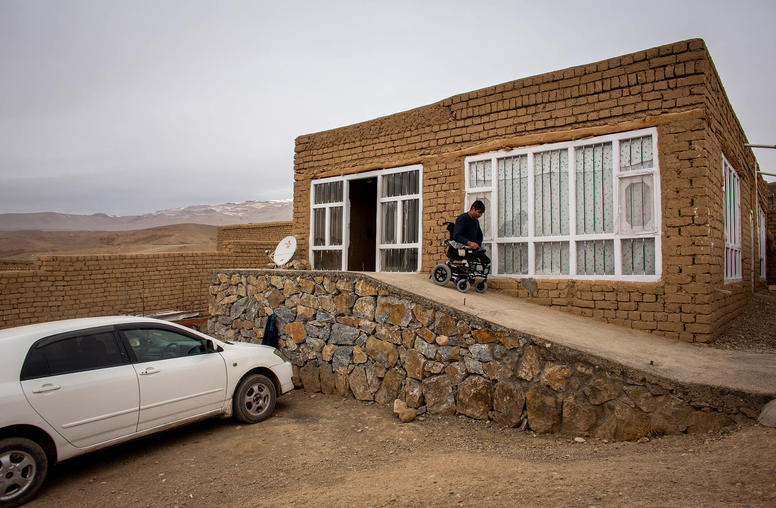Promoting a "culture of peace," as called for in a 1999 United Nations General Assembly resolution, requires "dynamic and creative leadership," the inclusion of women and sufficient funding, USIP's Kathleen Kuehnast told an annual UN forum in New York this week.
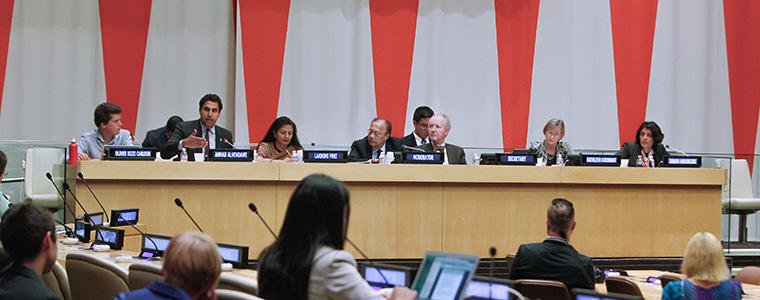
Kuehnast, the director of USIP's Center for Gender and Peacebuilding, was among five experts in one of two panel discussions Sept. 9 that were part of a daylong UN High Level Forum on the Culture of Peace. The panel, entitled "The Role and Contributions of Women and Youth to the Culture of Peace," also included Lakshmi Puri, assistant secretary-general for UN Women, and Ahmad Alhendawi, the UN secretary-general's envoy on youth. Nobel Peace laureate Leymah Gbowee, founder and president of Gbowee Peace Foundation Africa, gave the keynote address earlier in the day. She was awarded the Nobel Peace Prize for a movement in her native Liberia that helped Christian and Muslim women bridge divides during the country's civil war.
The panel discussion with Kuehnast was moderated by Ambassador Anwarul K. Chowdhury, a former UN under-secretary-general and longtime peace activist from Bangladesh whose initiative led to the 1999 resolution. When Bangladesh held the presidency of the UN Security Council in 2000, he also led the adoption of the landmark Resolution 1325, which called for greater protection and involvement of women in peace and security.
These are Kuehnast's remarks, after introductory acknowledgements. Her statement reflects her own views, and not necessarily those of the U.S. Institute of Peace.
The first American president, George Washington, stated that he did not want an Office of War without an Office of Peace. Two hundred years later in 1984, the U.S. Congress created the U.S. Institute of Peace with a mandate to prevent, mitigate and resolve violent conflicts around the world, and to focus on peacebuilding.
It took two centuries to enact Washington's desire for an "office" of peace, and perhaps there are lessons learned [that] we might reflect upon this afternoon as we discuss the culture of peace today. I would like to make three points related to gender and the culture of peace.
First, a culture of peace needs dynamic and creative leadership to organize for peace. Second, a culture of peace must have an inclusive approach that does not "instrumentalize" women or children. Finally, a culture of peace requires a well-funded effort.
Leadership
Nearly five decades ago, Martin Luther King Jr. stated: "Those who love peace must learn to organize as effectively as those who love war." King also recognized that leadership is a key starting point in any critical change process, especially as he emphasized that a genuine leader is not a searcher for consensus but a molder of consensus.
In that vein, we need leadership that shapes new and innovative ideas, including how to ensure more women are in leadership positions to assist in building lasting peace.
My second point is the need for an inclusive process. As a socio-cultural anthropologist, I have studied for the last 25 years societies in transition, whether it is from war to peace, from communism to democracy, or from disaster to recovery. I have seen how transition impacts societal gender roles.
I lived in Central Asia while the Soviet Union collapsed. Societal transition deeply affects how society organizes gender roles, and in places like Central Asia, which had among the highest literacy rates for women in the Muslim world, I witnessed the day-to-day collapse of gender equality norms and beliefs.
One of the issues among policy shapers and policy makers is that we use the term "gender" as another name for "women." However, men too are gendered beings, and they too must deal with magnified notions of hyper-masculinity that meld power and status in societies with violence.
When we are not gender-inclusive, this leaves us with half of a solution to many of the problems that plague women and girls in conflict and fragile settings. Therefore, a culture of peace must not create new silos or reinforce old silos. We must make sure that we engage men as partners for positive change.
Malala … and her father
In a two-year study that the Institute of Peace conducted on lessons learned on women's programming in Iraq and Afghanistan, one of the most consistent recommendations for ensuring sustainable programs for women is to consider men and the many roles they play in society as husbands, brothers, sons or fathers. Men need to be a part of the change and not kept apart.
Men often play a role as societal gatekeepers, and they [can offer opportunities] for the girls and women who are a part of their lives. We know that education for girls is strengthened when fathers advocate for their daughters. We know the remarkable courage of Malala Yousafzai. But we often do not tell the story of her father's persistence and courage to defy social norms in Pakistan.
We have to solve the problems of inequality and [of the] lack of women and girls arm-in-arm with male champions on this urgent issue. I want to suggest that the next creative path begins with breaking down silos. To stop the cycle of violence, we recognize that boys and men who are victims of violence have a greater chance to end up being perpetrators of violence.
What we need is the creation of a culture of peace that is inclusive of women but allows the complexity of human relationships its full right, and engages men and the greater understanding of gender identity.
A 'Silicon Valley' for Non-Violence
Finally, effectively organizing for peace requires resources. It requires commitment by the international community, governments and local civil society. Commitment and funding go hand-in-hand. [While] Dr. King said that we need to learn to organize as effectively as those who organize for war, we also need to invest and bring resources to bear upon the global problem of violence.
We need to incentivize peacebuilding. We need to think about a culture of peace as a "start-up" operation. What we need is a Silicon Valley for non-violent approaches to global problem-solving. We need the same kind of creative force that lies behind the creative technologies and how these could be applied to the culture of peace. We need to organize so that our best minds, our most innovative ideas, are being applied to building peace.
There is no need to remind this audience that our world is a complex place with too much violence – a world in which short-term thinking and violence seem to be the default setting toward solving problems. What we need is long-term thinking, where our default setting is non-violent problem solving, and applying innovative technology toward a culture of peace.
